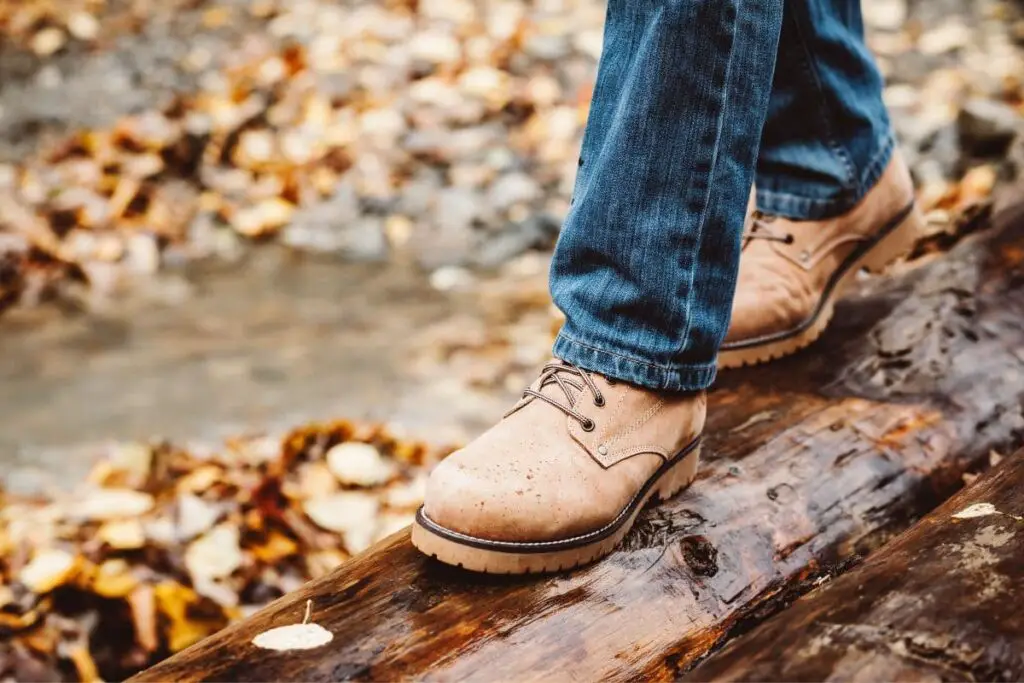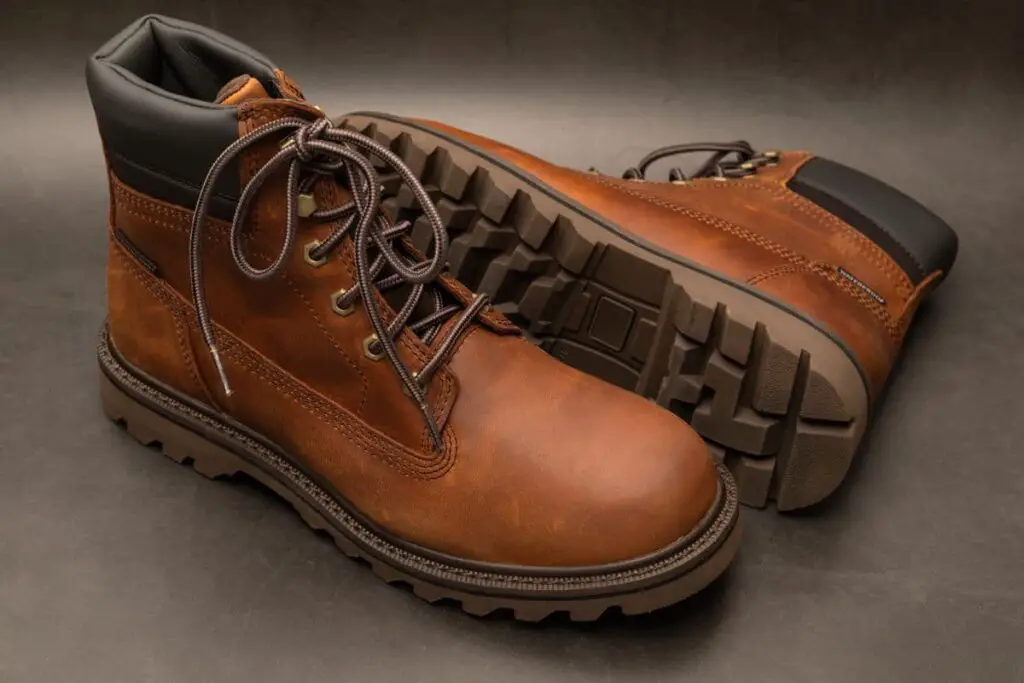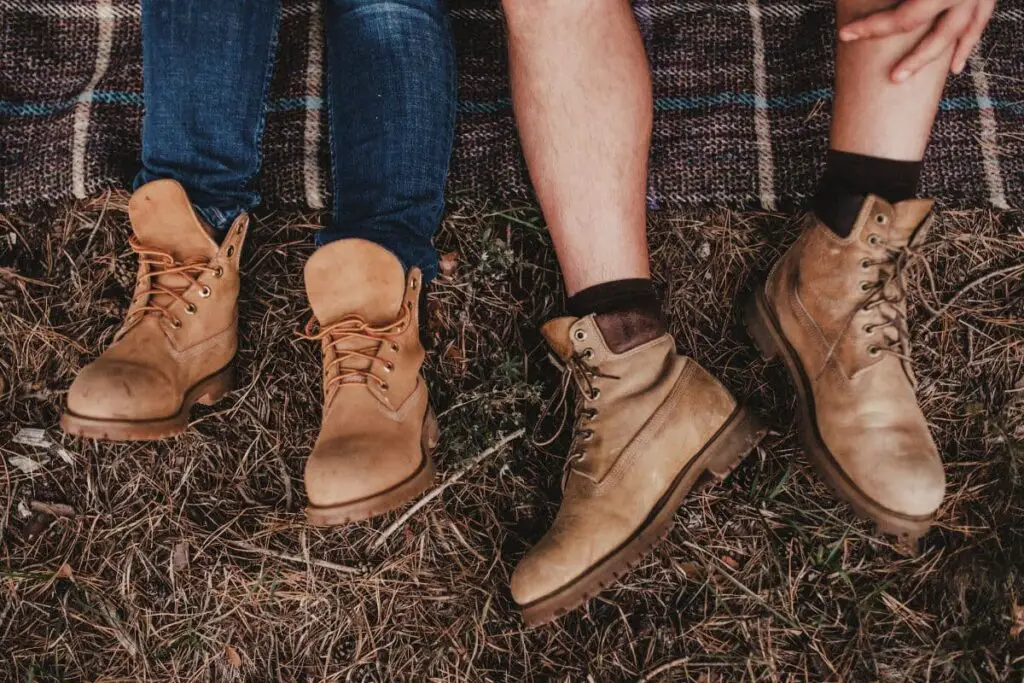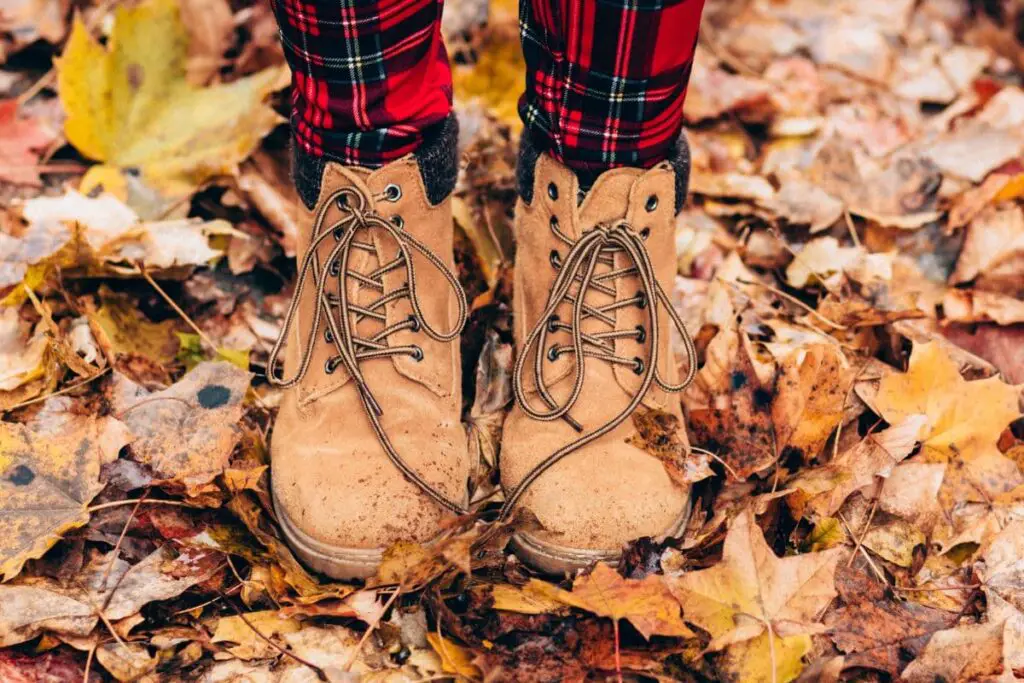As an Amazon Associate, we earn from qualifying purchases. We may also earn commissions if you purchase products from other retailers after clicking on a link from our site.
Timberlands are available in hundreds of designs, offering various styles from chukka to hiking shoes to rugged work boots. All Timberlands are made of premium materials with durable characteristics, but not every pair is waterproof.
You can wear Timberlands that are labeled waterproof in the rain, as these have Gore-Tex or TimberDry membranes. If your Timberlands aren’t labeled as waterproof, you shouldn’t wear them in the rain, as they can quickly become waterlogged and stained.
Timberland’s exceptional durability and quality are well-known, which is part of what makes them such a popular brand. However, the level of water resistance is not the same for every material and style.
Read on to learn if you can wear your particular Timberlands in the rain. I’ll also discuss how to treat your Timberlands to protect them from water, dirt, and other sources of damage.

Will Rain Ruin Your Timberlands?
Rain will ruin your Timberlands if the pair isn’t waterproof. Any Timberland waterproof footwear is labeled as such.
If your Timberlands don’t have the waterproof label, you shouldn’t wear them in the rain.
However, even if your Timberlands are waterproof, rain can still stain the leather and other materials, including nubuck and suede. This is because these materials are porous, and excessive water exposure can ruin them.
Most full-grain leather shoes do have some inherent water resistance because the outer hide is retained. But the leather will still require a waterproofing treatment for you to wear any Timberlands in the rain.
You may be surprised to learn that leather isn’t the only material used by Timberland. The company also uses recycled plastic — called ReBOTL fabric — and rubber. (Rubber is especially common for the outsole).
I mention this because neither the recycled plastic nor the rubber outsoles are a concern in the rain. This is because synthetic materials don’t absorb water.
The material isn’t the only thing you need to worry about, though.
Your Timberlands also need a waterproof design to keep rainwater from seeping through the seams.
So, do your Timberlands have this waterproof design?
It’s impossible to cover every variation of Timberlands, but I’ll try to help you by using the classic Original Yellow Boot as an example. These iconic nubuck leather boots have a waterproof design courtesy of the following features:
- Sealed seams
- Four-row stitching
- Injection-molded soles
The soles are permanently bonded to the boot, and the sealed seams make the Original Yellow Boot completely waterproof. The full-grain nubuck leather is treated during the tanning process to be water-resistant, and the design and manufacturing do the rest.
However, the pair does need care. If you don’t protect the leather with a water and stain repellant like Balm Proofer, your Timberlands will develop stains over time. The material may also degrade due to overexposure to rainwater if the protective coating wears off completely.
Examples of Waterproof Timberlands
As I mentioned, the waterproof Timberlands have Gore-Tex or TimberDry membranes.
So, if your pair is labeled as featuring Gore-Tex or TimberDry, the Timberlands are waterproof. However, to be safe, you shouldn’t assume a particular pair or style is waterproof unless the label specifically says so.

Here are a few examples of waterproof Timberlands:
- Timberland Men’s Mt. Maddsen hiking boots are labeled as featuring the TimberDry waterproofing technology, so these pairs are waterproof footwear.
- Timberland Men’s Premium 6-Inch boots are labeled waterproof footwear but don’t feature the TimberDry waterproofing technology.
- Similarly, Timberland Women’s Premium 6-Inch boots have the waterproof footwear label but without the TimberDry tag.
You can wear any of these Timberlands in the rain. The only difference lies in how you should care for these pairs, which I will discuss in the next section.
How to Treat Your Timberlands if You Wear Them in the Rain
Despite Timberland’s rigorous standards and testing procedures, treating your Timberlands regularly — even waterproof Timberlands — is necessary to ensure your footwear is as watertight as possible.
You have to do this to combat the inevitable loss of waterproof coating, which happens naturally over time.
Pro-tip: Dirty rainwater and any grimy matter in puddles can stain your Timberlands. A protectant is thus imperative to repel stains and water. The type of protector you use depends on the pair (more on that below).

For example, Timberland Men’s Mt. Maddsen hiking boots require the following treatments:
Likewise, Timberland recommends the following products to care for the Men’s Premium 6-Inch boots:
Pro-tip: You’ll need the Renewbuck Foaming Cleanser to clean the rubber outsoles of your Timberlands. The Balm Proofer Water and Stain Repellent is also necessary if you wear any waterproof Timberlands in heavy rain or frequently expose the pair to water.
The Timberland Women’s Premium 6-Inch boots require a bit of extra care, so you will need at least four solutions:
- Balm Proofer All Purpose Protector
- Balm Proofer Water and Stain Repellent
- Renewbuck Foaming Cleanser
- Footwear Dry Cleaning Kit
Pro-tip: Any pair with nubuck and suede will require the Timberland Footwear Dry Cleaning Kit. This ie because suede is not waterproof or water-resistant. If a waterproof pair has suede inside, the treatments for water repellency are confined to the other leather parts, rubber outsoles, and seams.
Examples of Non-Waterproof Timberlands
The entire inventory of non-waterproof Timberlands is not designed or manufactured to endure the rain. This also applies to Timberland Pro work boots and hiking shoes that aren’t waterproof.

Consider the example of the Timberland Men’s Titan EV 6-Inch Composite Toe Work Boot. This pair has many desirable features, such as:
- A breathable footbed
- A cushioning, lightweight midsole
- Durable construction for flexibility
- Electrical hazard protection
However, the design doesn’t include a seam-sealed construction.
The use of various materials with leather, including the fiberglass shank, doesn’t form the water tightness necessary for a pair to be water resistant. The breathable lining can also wick moisture.
Given all of these design choices, this pair isn’t considered waterproof.
Likewise, not all hiking boots made by Timberland are waterproof.
One example of non-waterproof hiking boots is the Men’s Euro Hiker Shell-Toe Boots. These Timberlands with fully gusseted tongues are treated with the company’s trademarked Defender Repellent System, but that doesn’t make it waterproof.
This Defender Repellent System treatment can repel stains, whether oil or water-based. However, these pairs don’t have waterproof designs or coated and treated premium leather construction. If you need to wear hiking shoes in the rain, you must get Timberland’s waterproof hiker boots.
Conclusion
Timberlands that are labeled waterproof can be worn in the rain, as these have Gore-Tex or TimberDry membranes. If your Timberlands aren’t labeled as waterproof, you should play it safe and avoid getting them wet.
Even if you have waterproof Timberlands, you still need to treat them regularly with certain Timberland-recommended products to ensure they retain their waterproof protection.
